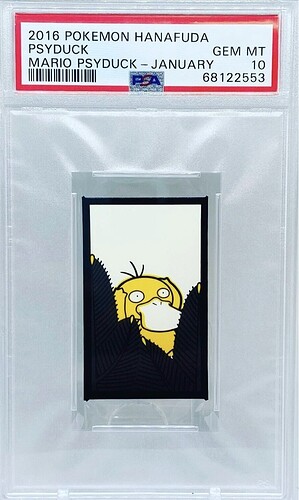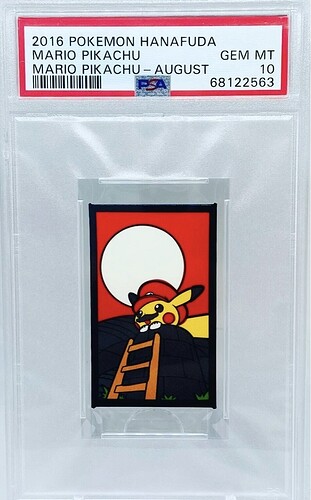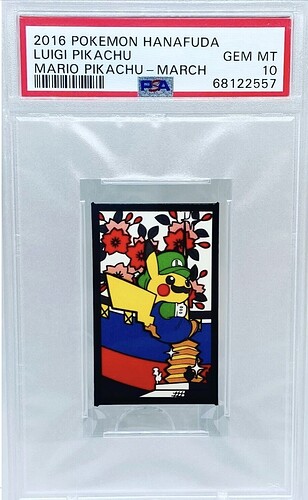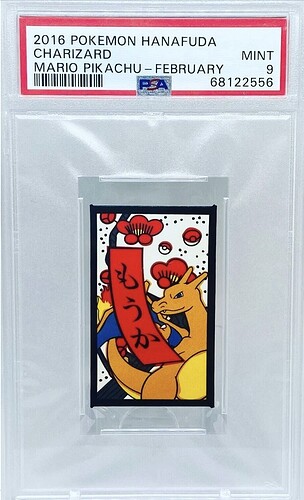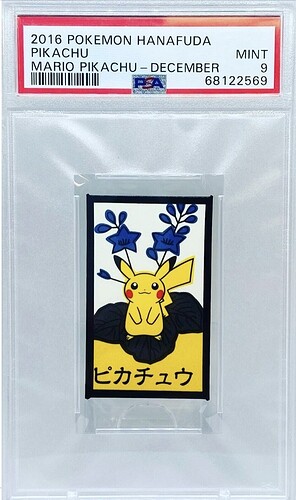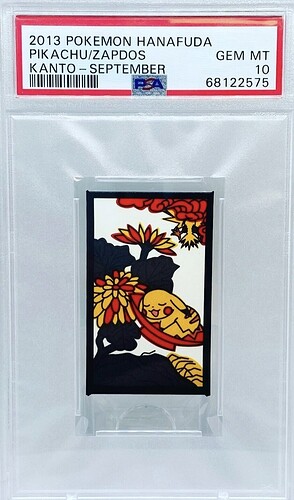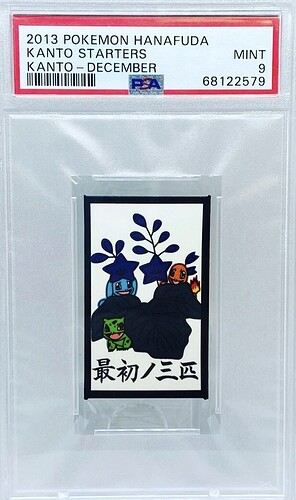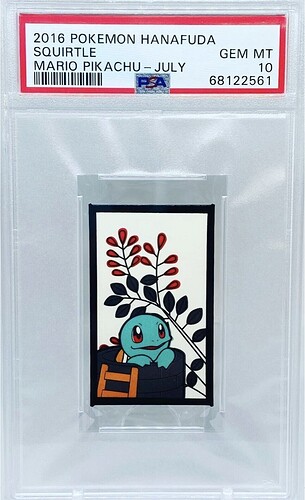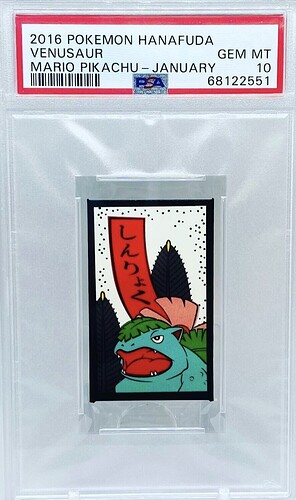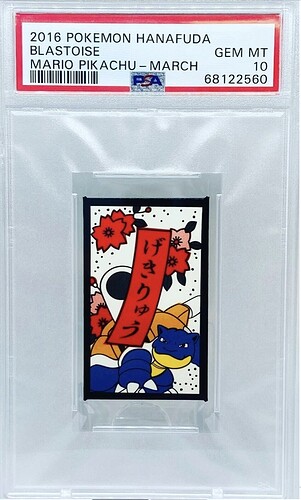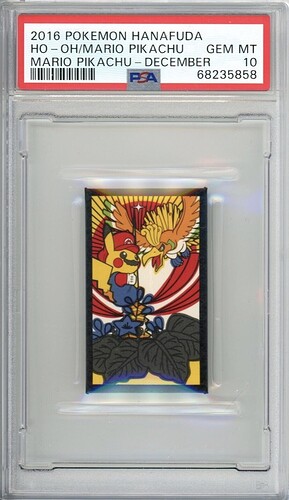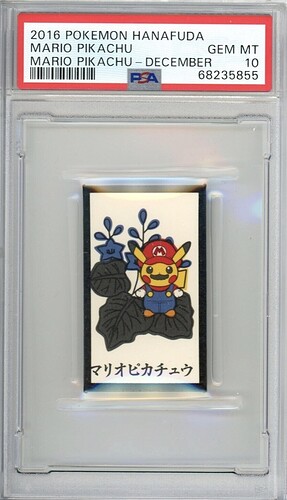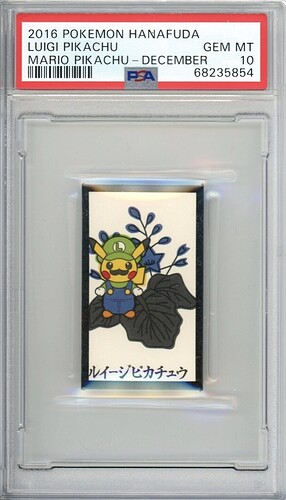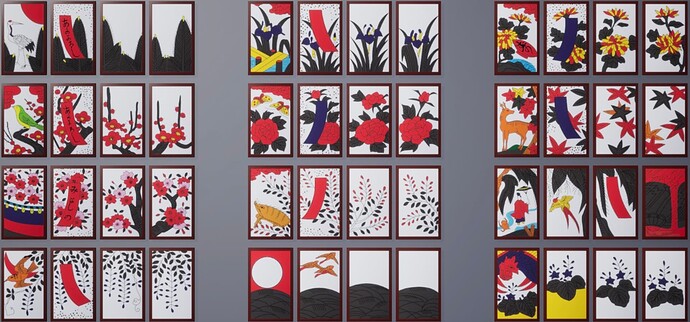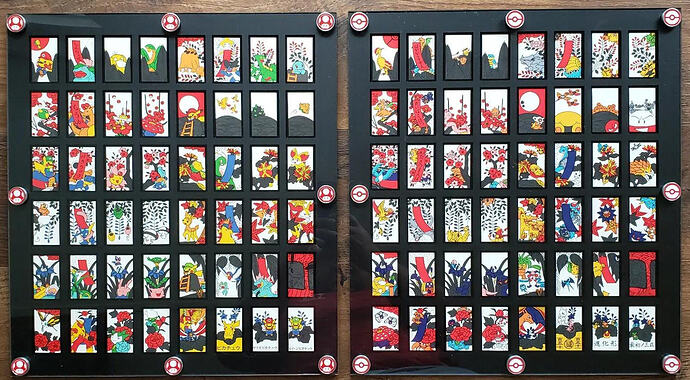Came across some Nintendo Hanafuda Pokemon cards on eBay that I knew little about, so I decided to research and compile some information here. I’d be curious to poll the audience and see what collective knowledge you all may have! After searching the forums, I see less than 10 posts that even mention the word ‘Hanafuda’. I’m not sure if these were just a small release that no one seems to know/care about or if they are so ubiquitous they are as valuable as grains of sand. But the prices on eBay reflect otherwise, and some of the artwork is absolutely awesome!
Please add to the discussion if you have any information! ![]() Maybe if we compile enough info we can make this an article/doc for future reference. Pretty pictures to follow
Maybe if we compile enough info we can make this an article/doc for future reference. Pretty pictures to follow ![]()
For starters, the card I came across was this one:
I’m a bit of a Psyduck fan, so this immediately caught my eye. Apparently, these are also a gradable item for PSA with a case that fits these cards well. For reference, the cards are (perhaps obviously) smaller than the “standard” card size. According to this Wikipedia article on Hanafuda, the cards are only 2+1⁄8 by 1+1⁄4 inches in size, and individual cards correlate to months of the year within the set, hence the ‘January’ designation on the Psyduck PSA label. The cards corresponding to a given month also are traditionally formed around a particular flower or plant (note the December Pikachu and Kanto Starters cards below both feature the same flower) . Some other artworks currently listed up for auction on eBay in PSA labels include:
For reference, the word “hanafuda” translates to “flower cards”, and thus the types of cards these parallel in Japanese culture might look something like this:
In terms of population, these appear to be quite rare, or at least not very widely graded, and even more so for the 2013 cards. As of the time of this writing, the Kanto Starters card from 2013 has a PSA pop of 2 (one in a 10, one in a 9). The Mario Pikachu from 2016 shows a total PSA pop of 49, of which 33 are PSA 10s:
From what I have gathered thus far, these were cards released in Japan exclusively at Pokemon centers by Nintendo in 2013 and 2016. For the history buffs out there, when Nintendo was founded in 1889, the very first product they produced was hanafuda cards and is part of what led to their entrance into the toy community years later. A picture showing both the full 2013 and 2016 sets can be seen here (credit to @jaxlax21):
An entire Wiki describing Japanese Hanafuda playing cards and their associated games can be viewed here (credit to @Dyl), as well as the below table showing common games (also credit to @Dyl):
| Traditional Games | Players | Family | Style | Origin |
|---|---|---|---|---|
| Go-Stop, a.k.a. Godori | 2-3 per round, max 7 per game | Fishing | Mekuri-kei | Korea |
| Hachi-Hachi (“Eighty-Eight”), a.k.a. Yokohama-Bana | 2-3 per round, max 7 per game | Fishing | Mekuri-kei | Yokohama, Japan |
| Hana-Awase | 2-4 | Fishing | Mekuri-kei | Japan |
| Koi-Koi | usually 2 | Fishing | Mekuri-kei | Disputed |
| Mushi, a.k.a. Ochi | 2 per round, max 4 per game | Fishing | Mekuri-kei | Osaka, Japan |
| Oicho-Kabu, a.k.a. Kaho or Katori | 2-10 | Banking | Kabu-kei, Honbiki-kei | Japan |
| Roppyakken, a.k.a. Roppyakkuken or Roppyakuten | 2-3 | Fishing | Mekuri-kei | Japan |
| Sakura, a.k.a. Higo-Bana or Hawaiian Hanafuda | 2-7 | Fishing | Mekuri-kei | Higo Province, Japan |
| Seotda, a.k.a. Sutda | 2-20 | Showdown | Kabu-kei | Korea |
Hopefully someone finds this informative or useful! If you appreciate Japanese culture (which I think we all probably do to some extent), Japanese artwork, and unique Pokemon items, these may be a good collection piece. As mentioned above, please feel free to add any and all information (or take away incorrect information); I’d definitely like to learn more about these ![]()
